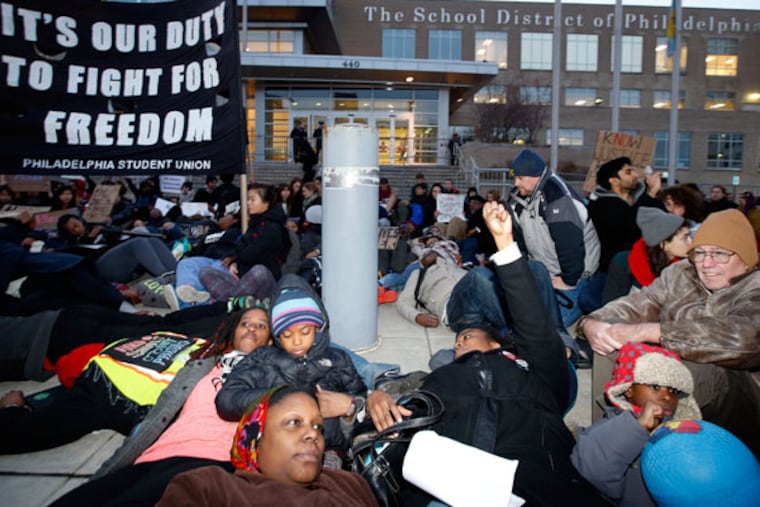No-frills spending plan adopted for Phila. schools
Even in a best-case scenario, the Philadelphia School District faces a $30 million deficit for next year. And that's with asking for $309 million in new money from the city and state, and not planning on any teacher raises over the next five years.

Even in a best-case scenario, the Philadelphia School District faces a $30 million deficit for next year.
And that's with asking for $309 million in new money from the city and state, and not planning on any teacher raises over the next five years.
Buffeted by years of brutal budgets, city school officials Thursday laid out a five-year financial plan that raised little hope the district would see many improvements.
Without a significant course correction, officials said, the district will continue to simply limp along.
Revenues are projected to increase by just 1 percent over the next five years, and costs are rising much faster, officials said.
"We come hat in hand every year because the mandated structures we have and the funding mechanism we have aren't growing at the same pace, and are not meeting the needs of the children of Philadelphia," chief financial officer Matthew Stanski said Thursday.
Stanski and Superintendent William R. Hite Jr. on Thursday presented a plan - not a budget, but a forecast - to the School Reform Commission with two tracks.
One, the "transformational" track, asks for significantly more money from city and state, but begins to address Hite's aim for improved academics and safety by adding money for school counselors, nurses, library services, credit recovery, Advanced Placement classes, facilities, and charter-school expansion.
The second, a "status quo" track, shows what would happen given revenues and expenditures as they are known now and preserves services at their current level, which means many schools without full-time counselors, nurses, or extracurricular activities. "A balanced budget came at the expense of the district's students," one document presented to the SRC read.
In the end, the SRC unanimously approved the status quo plan.
It forecasts a $30 million deficit for next fiscal year, but that assumes the district's attempt to cancel the teachers' contract and impose health-care changes are affirmed by the courts.
That case is in Commonwealth Court, but an injunction has halted the district's plans to impose the health-care changes beginning this month, and it's not clear when the court will make a decision.
If the Philadelphia Federation of Teachers is successful in challenging the contract cancellation, that ups the district's deficit to about $80 million for next year.
It's unknown how the district might make up the shortfall without major cash infusions from the city and state.
In recent years, the district has closed schools, squeezed unions, and gotten big sums from its funders. But much of that new money was one-time fixes, and officials have repeatedly said they can't take anything further away from schools.
To achieve the transformational plan, the district needs $309 million from the city and state for the 2015-16 school year - $206 million from the state, which is already projecting major budget problems itself, and $103 million from the city. Over five years, the district would need a total of $913 million in new money from the city and state.
The biggest cost increases in the five-year plan are charter and pension expenditures. Next year alone, the district expects it will have to spend $32 million more in pension costs and $42 million in charter costs.
Stanski would not say whether the district is planning for new charters - 40 new charter-school applications have been received. He said the district was planning to lose 5,000 more students to charters over the next five years, though.
If the financial plan adopted Thursday holds true, district teachers' salaries will be frozen for the next five years. A small amount of money has been allocated for raises, Stanski said, but those come from contracts that have already been negotiated, such as with the principals' union.
Before the SRC meeting, 200 students and advocates gathered on the steps of district headquarters for a "die-in" to protest "state violence." The event was organized by the Philadelphia Student Union.
They sang, chanted, read poetry, and lay down on the ground for six minutes to represent sixth grader Laporshia Massey, who died after an asthma attack at a city school where no nurse was on duty.
"The School District is taking away resources from our schools, such as nurses and counselors, and we see this as state violence," said Ruby Anderson, a senior at Science Leadership Academy and Student Union member. "Cuts to education spending in Pennsylvania affect black students the most, as do decisions from the School District, such as cuts to staff and school closures, so we are dying-in to say that black lives matter."